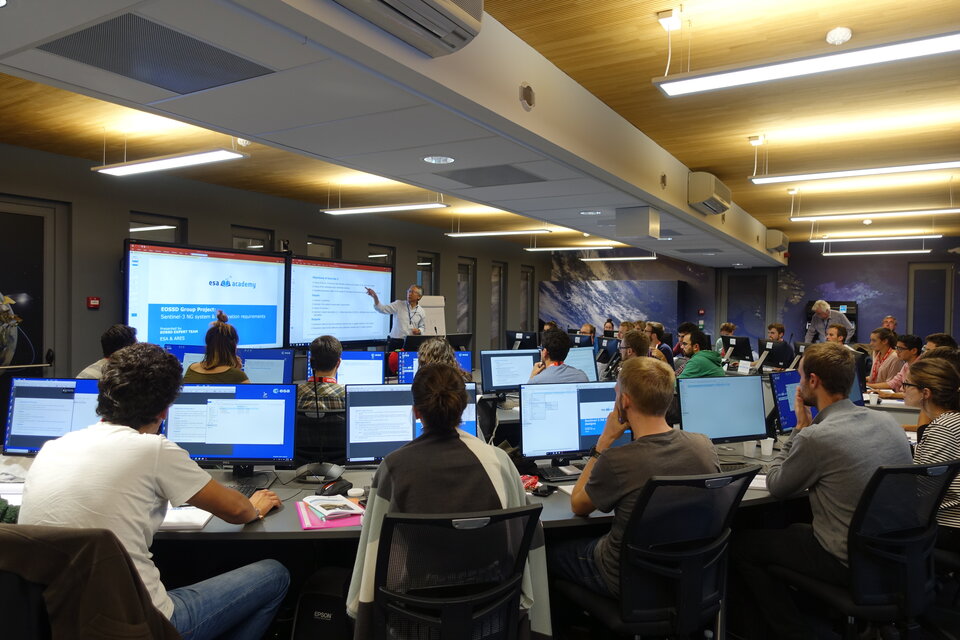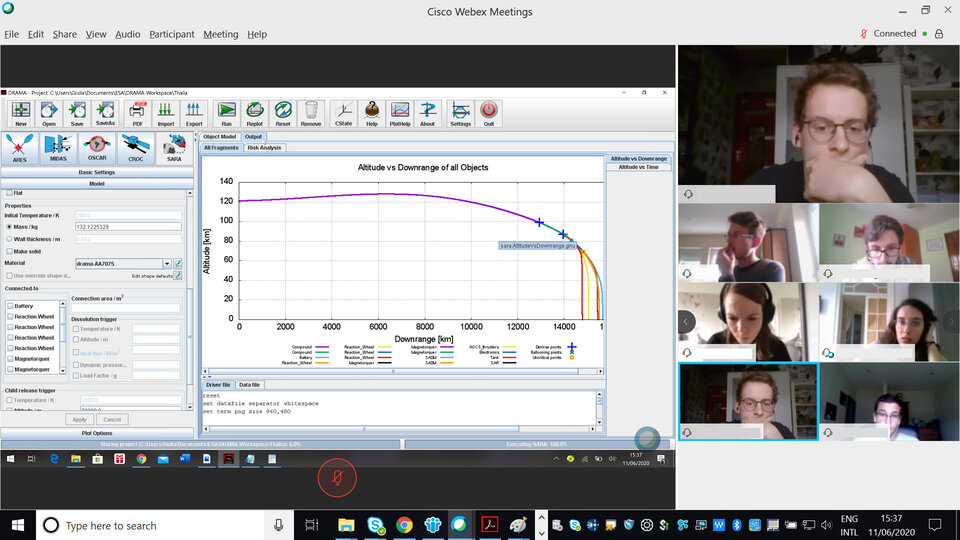New Opportunity for university students to learn about Earth Observation satellite system design
ESA’s Education Office is looking for 30 highly motivated students at Master’s and Ph.D. levels in engineering and science disciplines to participate in the second edition of the Earth Observation Satellite System Design Training Course. The course will be held online during 10 afternoon sessions (Central European Time) between 22 March and 2 April 2021.
Earth Observation (EO) satellites deliver information which are a key to guiding the World population towards a sustainable society. They allow the monitoring of vegetation and agriculture to safeguard the preservation and usage of our limited resources into the future; provide rapid assessment of damages in case of disasters such as flooding and earthquake, and enable efficient assistance measures; make it possible to gain better understanding of urban development; and allow the monitoring of meteorological and environmental parameters essential for a thorough understanding of the evolution of Earth’s global-scale dynamics, i.e. its future climate.

EO satellite missions constitute the largest programme of ESA’s activities. In fact, a significant portion of ESA’s annual budget is dedicated to EO satellite missions. ESA is also the main actor for the implementation of the current Copernicus Programme in cooperation with the European Commission, the world’s largest civil EO programme, which aims to provide Europe with independent access to Earth remote sensing data.
During the course, students will become acquainted with the end-to-end design of an EO satellite system. They will start with requirements definition based on mission objectives, progressing to orbit trade-offs and design of the payload instruments (microwave and optical), followed by the satellite design, ground segment architecture and operations, verification & testing, all the way through to in-orbit testing!

The students will be able to put into practice what they learn through a group project composed of a challenging series of design exercises which form a step-by-step observation system design project. Each student will be in charge of a given engineering field, including system engineering lead, microwave instrument sizing, optical instrument sizing, satellite design and ground segment & operations concepts. They will collaborate with their group to come up with a simple but realistic EO system design. During the Group Project sessions, the trainers will guide and support the students online.
The ESA Academy’s Earth Observation Satellite System Design Training Course has been developed by ESA’s Education Office, together with ESA’s EO system specialists and members of ARES, the Association of Retired ESA Staff. All the trainers delivering lectures have extensive experience in ESA EO system development, giving students a taste of what it is like to really work in the space sector.
Preliminary schedule:
| Day 1 |
Introduction to Earth Observation (EO) and EO Satellite Systems Introduction to Remote Sensing Techniques |
| Day 2 | From Observation Requirements to System Requirements Orbit Selection and Launcher Alternatives Orbit and Coverage Simulation (Group Project session 1) |
| Day 3 | Electromagnetic Wave Theory and Antennas Radar Remote Sensing |
| Day 4 | Microwave Radiometry Microwave Instruments Design (Group Project session 2) Basics of Space Optics |
| Day 5 | Passive Optical Payloads Space Lidars Optical Instrument Design (Group Project session 3) |
| Day 6 | Risk Management and Technology Development Satellite System Design & Payload Accommodations |
| Day 7 | Space Segment Design (Group Project session 4) Ground Segment & Operations Concepts |
| Day 8 | On-Ground Assembly, Integration and Verification Launch Campaign In-Orbit Verification System Design (Group Project session 5) |
| Day 9 | Development of Applications based on EO Data Climate Monitoring using EO Data System Design (continued) |
| Day 10 | Group Project final presentations |
The above lectures and GroupProject sessions will be complemented by short videos (self-viewing) which illustrate the practical aspects and real-world examples in the EO domain.
More information
Who can apply?
Students enrolled in university who fulfil the following criteria:
- aged minimum 18 years old. ESA Academy and relevant partners will only appraise applications from students who have no or limited professional experience in relevant engineering or space-related topics;
- be a citizen of an ESA Member State, Slovenia, Latvia or Canada;
- be enrolled as a Master or PhD student in a university for the year 2020-2021 (not graduating before the training course);
- be studying for an engineering or science degree, and have a solid mathematics and physics background.
Selected students will be requested to attend all 10 afternoon sessions live.
For the Group Project session on orbit and coverage simulation, the students will be asked to download on their personal computer two software tools developed by ESA.
Upon completion of the training course, the students will be evaluated on the basis of the Group Project work. In case of successful participation, the students will receive a certificate of participation and a course transcript, allowing them to request ECTS credit(s) from their respective universities.
How to apply
- Fill in the application form;
- Be sure to clearly state your first, second, and third choice for your role in the group project from the following tasks:
- System lead engineer
- Microwave payload engineer
- Optical payload engineer
- Satellite engineer
- Ground segment & Operations engineer
- Upload a motivation letter (PDF, maximum 1 page, no images);
- Upload a CV (Europass format, PDF, maximum 2 pages);
- Upload a formal recommendation letter (PDF, maximum 1 page, including signature, no images) from a university professor or academic supervisor of current university(if not possible due to the current COVID-19 situation in your country, please ask a university professor or an academic advisor to send a recommendation email to tlp@esa.int);
- Upload a copy of academic records (PDF);
All answers and documents shall be in English (except academic records if not available).
Students wishing to apply for the training course must submit their applications by 8 February 2021.
For more information, please contact tlp@esa.int


